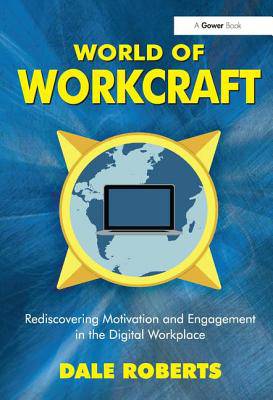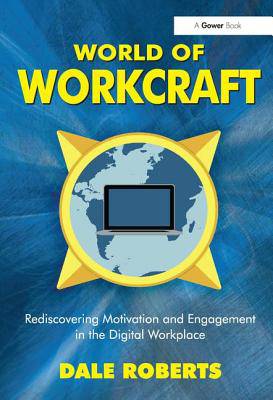
- Afhalen na 1 uur in een winkel met voorraad
- Gratis thuislevering in België vanaf € 30
- Ruim aanbod met 7 miljoen producten
- Afhalen na 1 uur in een winkel met voorraad
- Gratis thuislevering in België vanaf € 30
- Ruim aanbod met 7 miljoen producten
Zoeken
World of Workcraft
Rediscovering Motivation and Engagement in the Digital Workplace
Dale Roberts
Hardcover | Engels
€ 79,95
+ 159 punten
Omschrijving
Research demonstrated some years ago that there is a strong positive correlation between 'play', 'fun' and organisational performance. More recently, organisations have started to wrestle with the idea of how to engage the skills and motivation of the video game generation; as customers and as employees. The practical application of gamification is part of the disruptive innovation that offers businesses radical new ways of working, learning and performing. In a nutshell, gamification is the concept of applying engaging elements of game theory to non-game applications. An example would be to create a game to learn something new for work. Companies need to embrace the idea of blending games with work. And in order for that to happen, gamification must have a basic knowledge base and skill set, as well as both theory and practical application of its core principles. Dale Roberts's World of Workcraft provides the context and background to the need for and potential benefit of gamification as a means of turning a traditional corporate culture and structure into a dynamic community. He also provides guidance on how to (and how not to) introduce these concepts successfully.
Specificaties
Betrokkenen
- Auteur(s):
- Uitgeverij:
Inhoud
- Aantal bladzijden:
- 178
- Taal:
- Engels
Eigenschappen
- Productcode (EAN):
- 9781472429056
- Verschijningsdatum:
- 28/06/2015
- Uitvoering:
- Hardcover
- Formaat:
- Genaaid
- Afmetingen:
- 171 mm x 246 mm
- Gewicht:
- 553 g

Alleen bij Standaard Boekhandel
+ 159 punten op je klantenkaart van Standaard Boekhandel
Beoordelingen
We publiceren alleen reviews die voldoen aan de voorwaarden voor reviews. Bekijk onze voorwaarden voor reviews.











